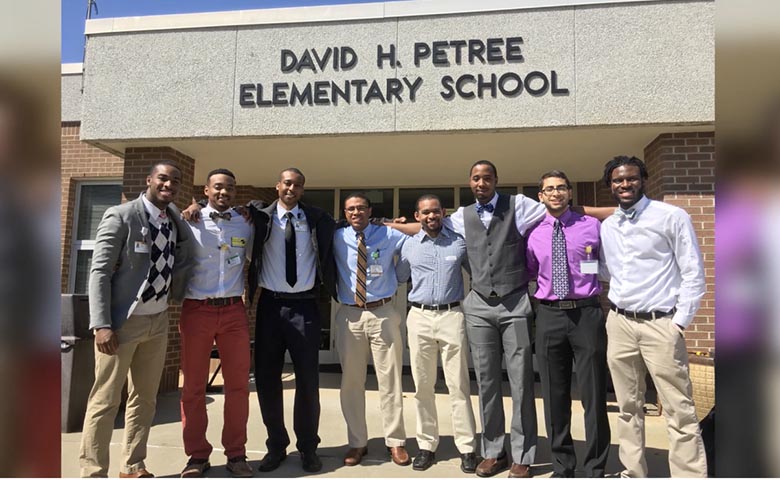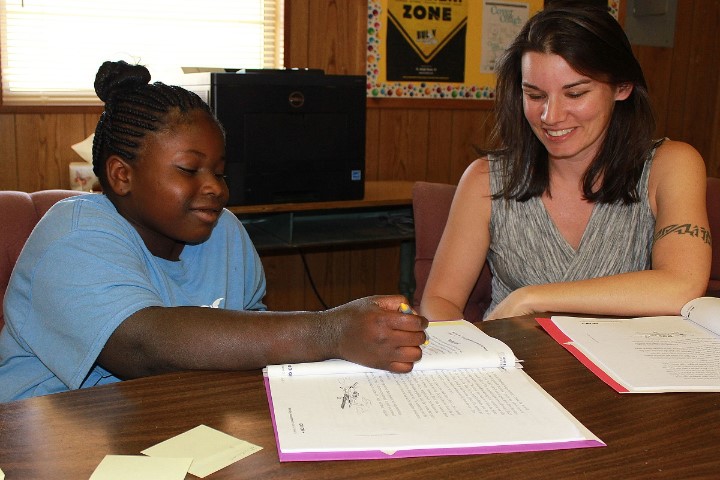Officials at Riverside School in Lyndonville, Vermont, believe one of the best ways for students to learn is to lead, and they’re expanding a school advisory program to give students more opportunities to mentor younger students. Sixth-graders develop presentations and other materials to help 5th-graders transition to the middle school, while 7th- and 8th-graders talk with elementary students about issues like bullying, exclusion, and personal space, the Caledonian Record reports.
“The Riverside community fully understands that leadership is a skill,” said Head of School Michelle Ralston. “Developing skills takes time. Development takes patience. Our young students begin early and can plan on hard work, many tests of patience, but lots of support from the entire Riverside Community.”
School officials recently worked with clinical therapist Ellen Moore to develop several new learning and leadership opportunities as part of “Riverside Pride,” an expansion of the school’s advisory program. The aim is to help students gain leadership experience throughout their time at Riverside, with the ultimate goal of developing stronger problem solving, leadership, and collaboration among students across grade levels.
Eighth-graders lead groups of six to eight students of varying ages in “Buddy Families,” meeting weekly to perform community services and help maintain the school’s campus. They also plan the Riverside’s morning assembly with themes to engage their classmates on important topics and announcements. The older students lead activities for youngsters for the school’s annual Mythology Day, as well, and visit elementary classrooms to talk about bullying and respect, according to the news site. “We all know that younger students listen to and look up to their older schoolmates. We also know that students learn best when they teach,” Ralston said. “This will be a learning experience for our seventh and eighth graders as well.”
The evolving leadership experiences work in conjunction with the advisory program, which begins in 6th grade with weekly meetings focused on study skills and habits of mind. In 7th grade, the focus shifts to critical skills and dispositions for collaborating in groups.
By 8th grade, students learn to lead the broader school community, capping off their experience with a final presentation to the entire student body. Eighth-graders also gain experience teaching younger classmates during the final weeks of school, under the watchful eye of teachers. “Riverside eighth-graders benefit from years of practicing patient leadership, assisting and mentoring their peers,” Ralston said. “Working together with the school’s mission, the commitment of faculty and staff, and the Riverside Advisory Program, the Riverside Pride initiative will serve to create and value a school-wide environment that fosters integrity and kindness towards one another.”
The Riverside School is building character in its students by consistently giving them the responsibility to lead. They use the language of “dispositions” that are built by “habits.” This sets them apart from many character education initiatives that focus merely on mental recall of character strengths, recognition of one’s own character strengths, or a virtue of the month. By force of habit, they are “assisting and mentoring their peers.”
Education researcher Kathryn Wiens studied prestigious independent schools for the Institute for Advance Studies in Culture’s School Cultures and Student Formation project and found that, ironically, parents can pose a challenge in teaching character. “These parents almost appeared to view the development of character as a nice accessory to the other benefits of a prestigious education,” Wiens wrote.
With the exception of two schools studied, Wiens reported that “a majority of students interviewed at each school suggested that their school did not ultimately care what kind of person they became. Instead, they felt the school was most concerned about their academic achievement and where they went to college.” Wiens’ full research is available as a chapter in The Content of Their Character, which is available for preorder now.
The Riverside School, like other independent schools, faces similar issues, which makes its work weaving character formation and leadership development into the habits and practices of students all the more admirable.
Getting Smart author Tom Vander Ark argues that, “Advisory has to be the spine of the next generation high school,” and offers guidance on how to structure and sustain an advisory program that “really is the glue that holds it all together.”






